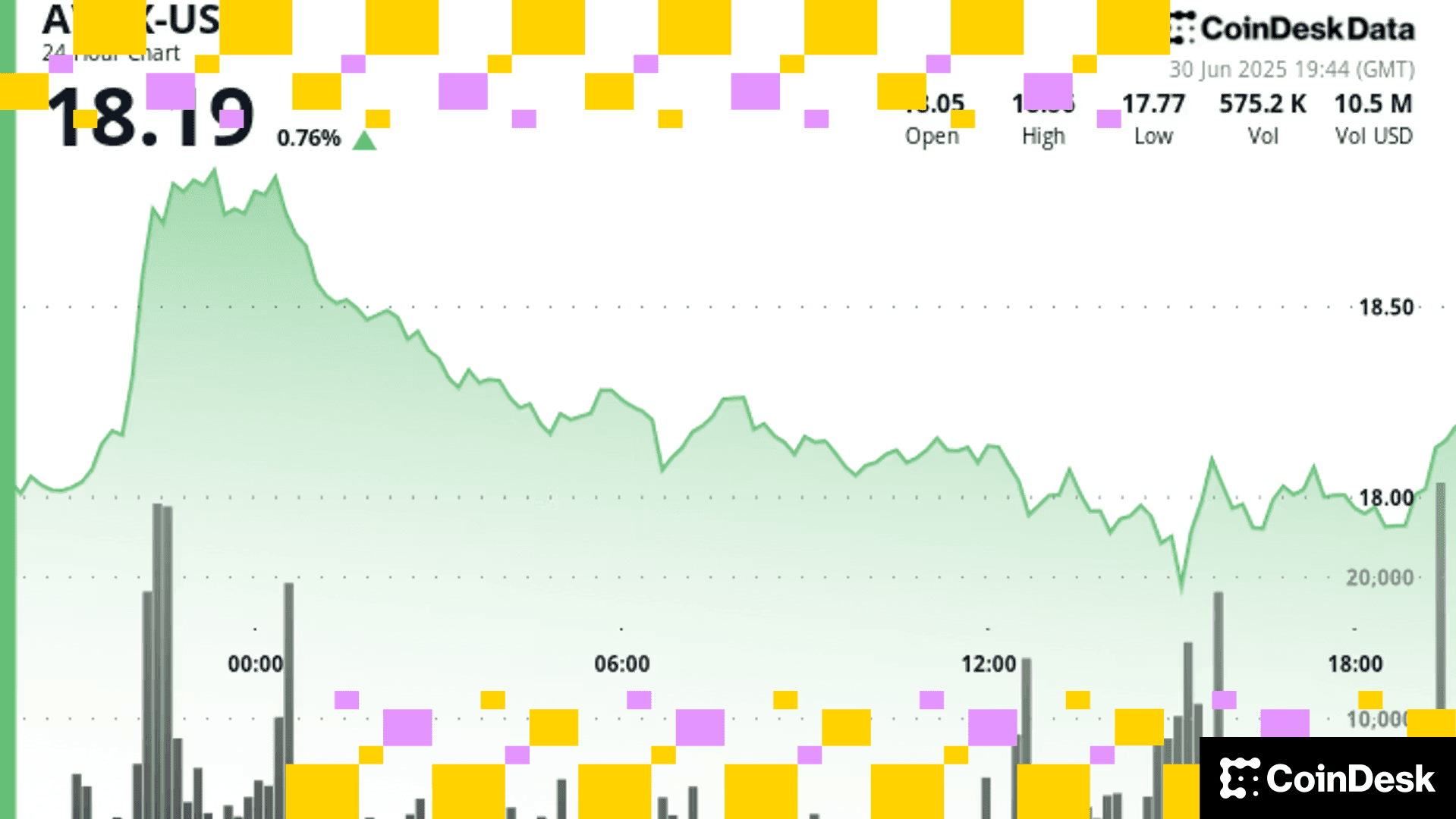U.S. Regulators Do Have Some Control Over Stablecoin Tether: JPMorgan
USDT's appeal relative to other stablecoins will likely diminish as regulations will require more transparency and compliance with new anti-money laundering standards, the report said.

- The U.S. Treasury Department’s Office of Foreign Assets Control (OFAC) can exert some control over the stablecoin issuer’s offshore usage.
- Tether’s association with crypto-mixer Tornado Cash is one such example.
- International cooperation could hinder the usage of USDT.
Tether’s (USDT) dominant position as the largest stablecoin is vulnerable due to its dependence on the American market and pending regulations, JPMorgan (JPM) said in a research report Thursday.
Despite Tether not being based in the U.S., regulators are able to exert some control on the stablecoin issuer’s offshore usage through the Office of Foreign Assets Control (OFAC), the report said.
The stablecoin's association with Tornado Cash is one such example, the bank said, noting that OFAC blacklisted the crypto-mixer that ran on the Ethereum network in August 2022, accusing it of facilitating money laundering.
“While direct legal actions against offshore entities and decentralized firms are complex, indirect measures and international cooperation could potentially hinder the usage of tether,” analysts led by Nikolaos Panigirtzoglou wrote.
Forthcoming stablecoin regulation will probably put “indirect pressure on tether as its attractiveness would diminish relative to stablecoins with more transparency and greater compliance with new regulatory KYC/AML standards,” the authors wrote, adding that this issue would also apply to decentralized finance (DeFi), where USDT is used as a source of collateral and liquidity. KYC refers to customer identification and AML to anti-money laundering regulations.
“Stablecoin regulations, in particular, are set to be coordinated globally via the Financial Stability Board (FSB) across the G20, further constraining the usage of unregulated stablecoins such as tether,” the report added.
Tether has come under pressure to be more transparent about how its reserves are invested, and has been working toward publishing real-time data. Still, JPMorgan says the latest disclosures by the stablecoin issuer are not enough to reduce concerns.
The Wall Street giant previously argued that USDT’s dominance was bad for the wider crypto ecosystem, a claim that was rebutted by Tether’s CEO Paolo Ardoino who said in emailed comments that it “seems hypocritical to talk about growing concentration from the biggest bank in the world.”
Read more: Stablecoin Tether’s Increasing Dominance Is Bad for Crypto Markets, JPMorgan Says
Mehr für Sie
Exchange Review - March 2025

CoinDesk Data's monthly Exchange Review captures the key developments within the cryptocurrency exchange market. The report includes analyses that relate to exchange volumes, crypto derivatives trading, market segmentation by fees, fiat trading, and more.
Was Sie wissen sollten:
Trading activity softened in March as market uncertainty grew amid escalating tariff tensions between the U.S. and global trading partners. Centralized exchanges recorded their lowest combined trading volume since October, declining 6.24% to $6.79tn. This marked the third consecutive monthly decline across both market segments, with spot trading volume falling 14.1% to $1.98tn and derivatives trading slipping 2.56% to $4.81tn.
- Trading Volumes Decline for Third Consecutive Month: Combined spot and derivatives trading volume on centralized exchanges fell by 6.24% to $6.79tn in March 2025, reaching the lowest level since October. Both spot and derivatives markets recorded their third consecutive monthly decline, falling 14.1% and 2.56% to $1.98tn and $4.81tn respectively.
- Institutional Crypto Trading Volume on CME Falls 23.5%: In March, total derivatives trading volume on the CME exchange fell by 23.5% to $175bn, the lowest monthly volume since October 2024. CME's market share among derivatives exchanges dropped from 4.63% to 3.64%, suggesting declining institutional interest amid current macroeconomic conditions.
- Bybit Spot Market Share Slides in March: Spot trading volume on Bybit fell by 52.1% to $81.1bn in March, coinciding with decreased trading activity following the hack of the exchange's cold wallets in February. Bybit's spot market share dropped from 7.35% to 4.10%, its lowest since July 2023.
More For You











